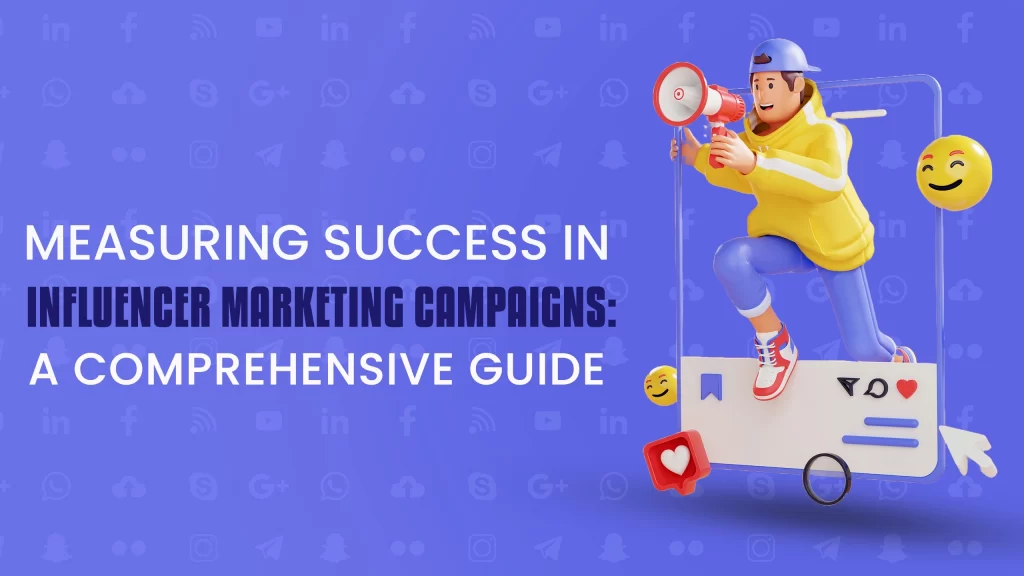In the ever-evolving landscape of digital marketing, influencer marketing has emerged as a powerful strategy for brands to connect with their target audiences. Leveraging the reach and influence of individuals on social media platforms, influencer marketing campaigns have become an integral part of many businesses’ promotional efforts. However, the success of these campaigns cannot be determined solely by the number of followers an influencer has. To truly gauge the impact and ROI, brands must employ a comprehensive approach to measuring success in influencer marketing campaigns.
Understanding Influencer Marketing Campaigns:
Influencer marketing involves collaborating with individuals who have a significant and engaged following on social media platforms. These influencers have the ability to sway the opinions and purchasing decisions of their followers. Brands leverage this influence by partnering with influencers to promote their products or services.
Key Metrics for Measuring Success:
1. Reach and Impressions:
One of the fundamental metrics to measure the success of an influencer marketing campaign is the reach and impressions. Reach represents the total number of unique users who have seen the content, while impressions indicate the total number of times the content has been displayed. These metrics provide insights into the campaign’s overall visibility and exposure to the target audience.
2. Engagement Rates:
Beyond reach and impressions, engagement rates are crucial indicators of a campaign’s success. High engagement rates, measured through likes, comments, and shares, signify that the audience is not only seeing the content but also actively interacting with it. Brands should analyze these interactions to understand the level of resonance the campaign has with the audience.
3. Conversion Tracking:
Ultimately, the goal of any marketing campaign is to drive conversions. Whether it’s website visits, product purchases, or sign-ups, tracking conversions directly ties influencer efforts to tangible business outcomes. Utilizing unique tracking links and promo codes associated with influencers allows brands to attribute conversions directly to their campaigns.
4. Audience Demographics:
Understanding the demographics of an influencer’s audience is essential for targeting the right customer base. Brands should assess whether the influencer’s followers align with their target market in terms of age, location, interests, and purchasing behaviors. This information ensures that the campaign reaches the right people and maximizes its impact.
5. Brand Sentiment:
Monitoring brand sentiment is crucial in influencer marketing. Analyzing comments and feedback from the audience provides insights into how the brand is perceived. Positive sentiment indicates a successful campaign that resonates well with the audience, while negative sentiment signals the need for adjustments in strategy.
6. Return on Investment (ROI):
Calculating the ROI of influencer marketing campaigns involves assessing the overall financial impact. Brands should compare the cost of the campaign with the generated revenue or other predefined key performance indicators. This analysis helps in determining the profitability and efficiency of the influencer partnership.
7. Long-Term Partnerships:
Success in influencer marketing goes beyond individual campaigns. Establishing long-term partnerships with influencers can lead to sustained brand visibility and loyalty. Brands should evaluate the potential for ongoing collaborations based on the success of initial campaigns and the alignment of values between the brand and the influencer.
Challenges in Measurement:
While there are various metrics to measure success in influencer marketing campaigns, challenges exist in accurately attributing results solely to influencer efforts. External factors such as market trends, seasonality, and changes in consumer behavior can influence campaign performance. Additionally, distinguishing between organic and influencer-driven growth requires sophisticated analytics tools.
Best Practices for Successful Measurement:
1. Set Clear Objectives:
Clearly define the objectives of the influencer marketing campaign before its launch. Whether it’s brand awareness, product sales, or user engagement, having well-defined goals allows for more accurate measurement and evaluation.
2. Use Analytics Tools:
Leverage analytics tools and platforms to track and measure campaign performance. Social media analytics, Google Analytics, and influencer marketing platforms provide valuable data on reach, engagement, and conversions.
3. Implement UTM Parameters:
Utilize UTM parameters in tracking links to attribute website traffic and conversions directly to influencer activities. This level of detail is crucial in understanding the effectiveness of different influencers and optimizing future campaigns.
4. Monitor Real-Time Metrics:
Keep a close eye on real-time metrics during the campaign’s duration. Monitoring these metrics allows for quick adjustments and optimizations to maximize impact while the campaign is still active.
5. Collect Qualitative Data:
In addition to quantitative metrics, collect qualitative data through surveys, polls, and direct audience feedback. Understanding the audience’s perception and sentiment provides valuable insights into the campaign’s overall success.
Conclusion:
Measuring success in influencer marketing campaigns requires a holistic approach that goes beyond superficial metrics. Brands must consider reach, engagement, conversions, and audience demographics to assess the true impact of influencer partnerships. By setting clear objectives, leveraging analytics tools, and adapting strategies based on real-time data, brands can unlock the full potential of influencer marketing and achieve tangible results in the ever-competitive digital landscape.










